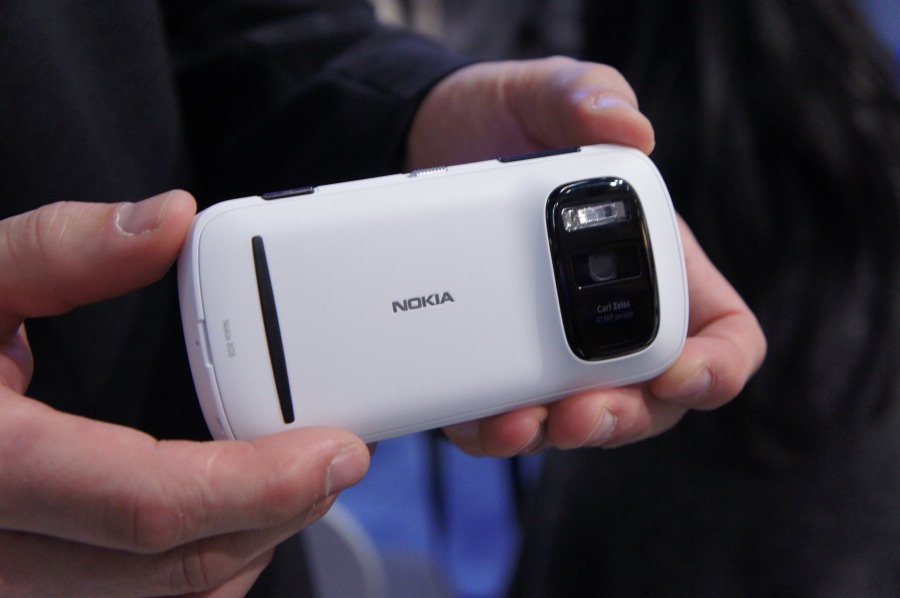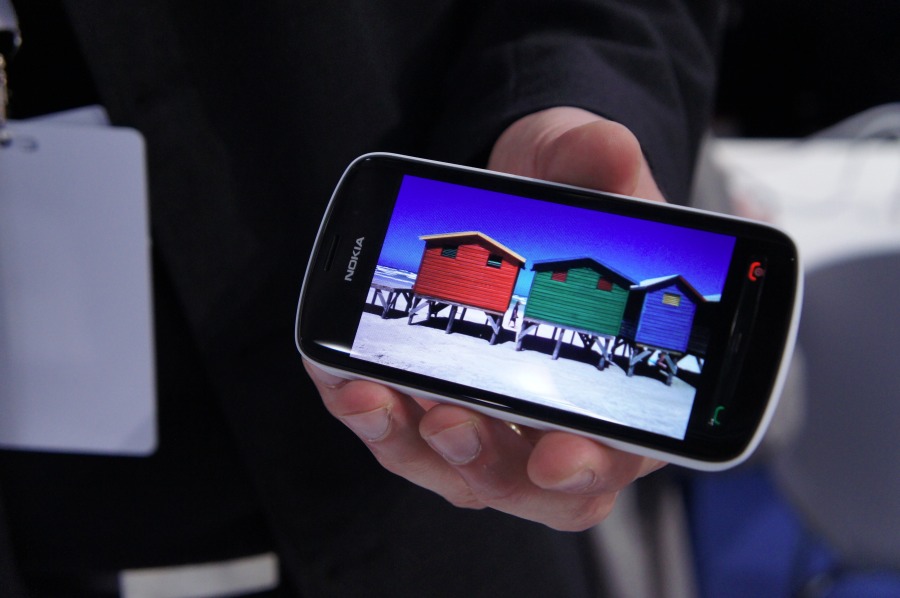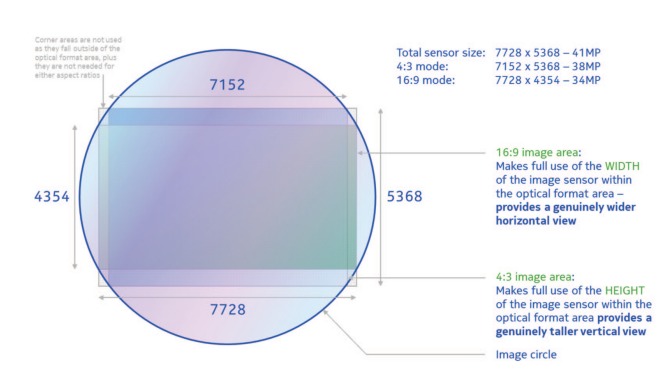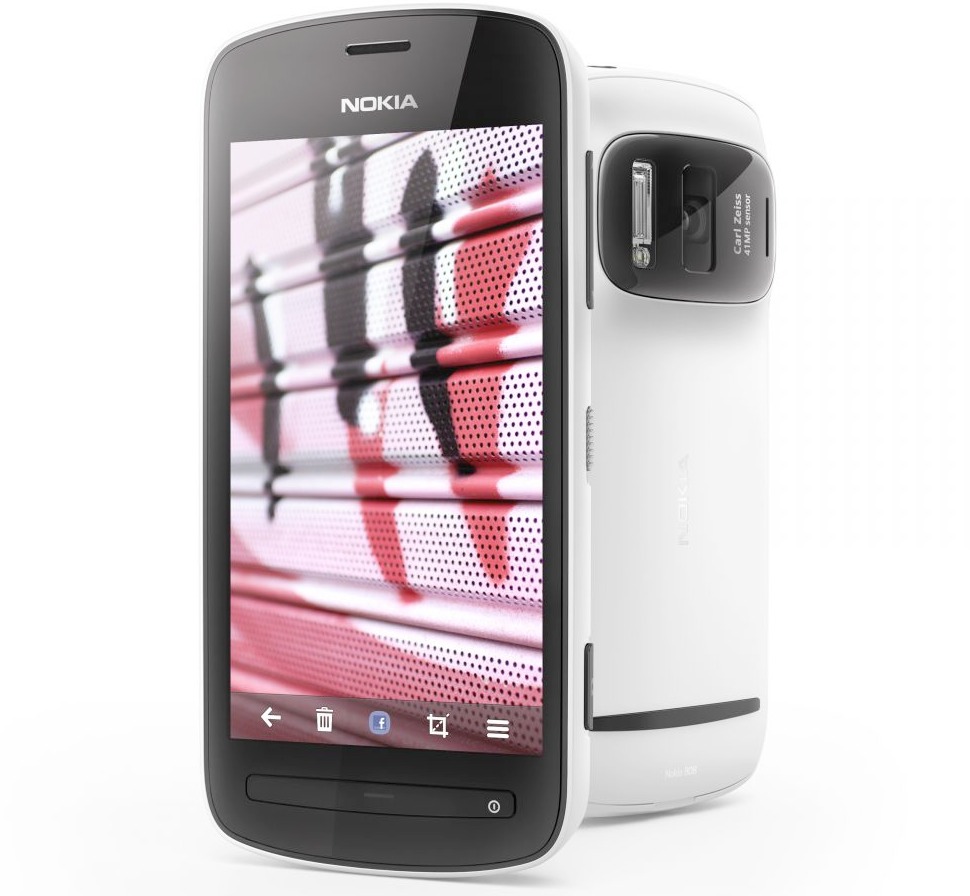
From the official press release:
The Nokia 808 PureView features a large, high-resolution 41 megapixel sensor with high-performance Carl Zeiss optics and new pixel oversampling technology. At standard resolutions (2/3, 5 and 8 megapixels) this means the ability to zoom without loss of clarity and capture seven pixels of information, condensing into one pixel for the sharpest images imaginable. At high-resolution (38 megapixel maximum) it means the ability to capture an image, then zoom, reframe, crop and resize afterwards to expose previously unseen levels of details. With superior low-light performance and the ability to save in compact file sizes for sharing in email, MMS, and on social networks, the Nokia 808 PureView makes it possible for anyone to capture professional looking images in any conditions.
In addition to superior still imaging technology, the Nokia 808 PureView also includes full HD 1080p video recording and playback with 4X lossless zoom and the world's first use of Nokia Rich Recording. Rich Recording enables audio recording at CD-like levels of quality, previously only possible with external microphones. The Nokia 808 PureView also features exclusive Dolby Headphone technology, transforming stereo content into a personal surround sound experience over any headphones and Dolby Digital Plus for 5.1 channel surround sound playback.
The 808 PureView is a 4"-screened (CBD) Symbian/Nokia Belle smartphone, running "Belle Feature Pack 1" (improved performance, personalisation and entertainment options, with a new browser, the latest Nokia Maps and an improved notifications bar), running at 1.3GHz with GPU and 512MB of RAM. We've listed the full specifications at the bottom of this story.
The phone will ship in 3 colors at the start – Black, White and Red - and should cost around 450 Euros before taxes and subsidies. The 808 PureView is expected to be available in the 2nd Quarter of 2012.
Here's the 808 on display today at MWC:

Camera phone leadership and innovations
Whatever else is levelled at Nokia these days (and it has had its ups and downs, to be sure), even its harshest critics have acknowledged that it has been at the forefront of camera phone technology for the last decade. Heck, Nokia invented the term 'camera phone' with the launch of the 7650, back in 2002. Ten years later we arrive at the 808 PureView, via the N70 (fixed focus, first 2 megapixel in a smartphone), N93 (first 3 megapixel, first VGA capture, plus optical zoom), N95 (first 5 megapixel), N82 (first with Xenon flash), N86 (first to have a 1/2.3" sensor, first with 8 megapixel, first with intelligent digital zoom, first with full digital microphone), and, of course, the N8 (first to have a 1/1.83" sensor, plus capturing 720p video, and with Xenon and most of the other tech from the N86).
That's quite a legacy and you'll therefore excuse Symbian-powered camera phone fans for going just a little bit crazy with today's news.
Why not optical zoom?
One thing that never made it into Nokia camera phones (other than the barrel-camera N93/N93i) is optical zoom, chiefly because, even back in the days of the N95, the physical mechanisms needed were deemed too bulky. Fast forward to today, with even more of an awareness of device thickness, and it's easy to see why Nokia opted for a little lateral thinking in providing a solution to one of the biggest issues with camera phones - uninformed users using the supplied digital zoom without realising that they're actually losing detail rather than gaining it.
In video capture, in the N86 and N8, Nokia's intelligent digital zoom has the spare resolution to allow up to 3x effective zooming without losing any quality whatsoever, and the next logical step has been to implement something similar in stills mode (and retain it for video, as well, as you saw above). But the N8's 12 megapixel sensor was already being used fully - so where next? The answer was to radically increase the number of pixels further - not (necessarily) to provide the user with unwieldy and unnecessary 40 megapixel photos but to interpolate from this vast pixel array at any zoom level and resolution needed.
The 1/1.2" sensor
The 808 PureView's sensor is huge - 1/1.2" optical format, a full 2.5 times the size of the N8's sensor, which was already by far the biggest in the smartphone world. In terms of pure physics, the 808 PureView is as far away from the N8 in terms of performance as the N8 was to its competition back when it launched in 2010. Here's a look at how the 41 megapixel sensor is laid out:

(taken from the PureView white paper, well worth a perusal)
Below is the brief demo video showing how the pixel oversampling works, essentially combining information from seven or so sensor pixels to provide higher quality detection of accurate colours to one virtual pixel. In addition to better colour accuracy, there's dramatically better lower-light performance too, since a lot of the digital sensor 'noise' can be averaged out.
And, whereas traditional optical zoom mechanisms and lens assemblies cut down on the amount of light available to the sensor, the pixel oversampling technique works with a fully open lens and aperture meaning that as much light as possible is gathered. Again leading to lower noise in your photos, even when you look really, really closely.
In practice this means that the 808 can achieve dramatically higher image quality than any phone camera on the market and, indeed, many standalone cameras, while offering up to three times pseudo-optical zoom (24-74mm), without losing any detail through conventional digital zoom methods.
Below is an example Nokia 808 image, taken in low light conditions. And here's the full 38 megapixel version for your perusal! (via Nokia Press)

As with the N8, the 808 PureView has proper Xenon flash, rated at double the power of the N8's unit, for even better night time shots, freezing movement down to 10 microseconds. Combine this flash with the PureView sensor and this phone should be able to outperform a great many (non-DSLR) standalone cameras.
There's no N86-style variable aperture, with the designers opting for an N8-style fixed aperture (here F2.4) and an automatic Neutral Density filter to avoid blowing out highlights when shooting in very bright light conditions.
Zooming in practice
'Pinch to zoom' is great for viewing photos afterwards, but not so good for composition, especially video, where you need smoothness of movement. 'Slide Zoom... gets the framing right first time'. All you have to do is slide your finger up or down on the display to interact. There’s no need to touch a specific UI element on the display. As you move your finger on the display, a ‘frame’ appears on the screen which moves in sync with your finger. The moment you lift your finger from the display, it zooms directly to this setting.
Video capture mode
In video mode, there are various levels of lossless digital zoom, as on the N86 and N8 but taken to the next level in terms of resolution. There's also a LED for video recording at night in addition to the Xenon for night stills - an unusual but extremely welcome combination.
Captured audio is also significantly improved ('Rich Recording'), even when compared to the output from the digital mikes in the N86 and N8 - here on the 808 PureView with 'Dolby Headphones', effectively recording Dolby Surround Sound through the 808's stereo microphones - and able to reproduce the same via any connected headphones. Impressively, High Amplitude Audio Capture (HAAC) means that very loud sounds can be intelligently handled, right up to 140dB (way louder than a military jet, way louder than a rock concert!), without distortion.
Intro video
Here's the official launch video for the Nokia 808 PureView:
From the specifications below, in addition to the PureView technology, I'd highlight the removeable battery, essential for plugging in a replacement when you run out of power in the middle of shooting a party, or for replacing the battery after a year when its capacity is diminished. I'd also point to the 4" RGB CBD screen, ostensibly the same excellent unit as in the E7. And the double-strength Xenon flash, of course.

General specifications
• Size: 123.9 x 60.2 x 13.9 mm (17.95 mm at camera)
• Weight (with battery): 169 g, Volume: 95.5 cc
• 16 GB internal user memory, support for up to 48 GB with an external microSD memory card
• Screen size: 4” Resolution: 16:9 nHD (640 x 360 pixels), AMOLED, 16.7 million colours, ClearBlack display, Gorilla Glass
• BV-4D 1400 mAh 'high voltage' Li-ion battery, user replaceable(!)
• 512MB RAM, 1.3GHz processor plus GPU
• GSM/EDGE 850/900/1800/1900, WCDMA 850/900/1700/-21001900/2100
• Bluetooth 3.0, HDMI, DLNA
• High-Speed USB 2.0 (micro USB connector), Micro USB connector and charging, USB On-the-Go
• 3.5 mm Nokia standard audio connector with TV-out
• Secure NFC
• WLAN
• A-GPS
• FM transmitter
• Talk time (maximum): GSM 11 hours, WCDMA , 6.5 hours, Standby time (maximum): GSM 465 hours, WCDMA 540 hours
Imaging specs
• 41 megapixel camera sensor with Nokia PureView imaging technology and Carl Zeiss optics
• Fullscreen 16:9 viewfinder with easy on-screen touch controls
• Xenon flash with operating range up to 3.5m, depending on conditions (double the range of the N8's flash)
• LED for video recording
• Lossless zoom: 3x for stills
• Focal length: 8.02 mm (35 mm equivalent focal length -26 mm, 16:9 / 28 mm, 4:3)
• Auto focus and touch to focus
• Focus modes: Hyperfocal, Macro, Infinity and Auto
• Focus range: 15 cm ~ infinity
• Macro focus 15-50 cm
• F number/aperture: F2.4
• Supported aspect ratios and resolutions True 16:9 (2 MP, 5 MP [Default], 8 MP, 34 MP) 4:3 (3 MP, 5 MP, 8 MP, 38 MP)
• Three shooting modes: Auto, Scenes, Creative, Face detection software
• Launch camera from lock with full press of capture key
• Video resolutions: Full HD (1920x1080) 30fps [Default], HD (1280x720) 30fps, nHD (640x360) 30fps
• Lossless Zoom: 4x1080p [Default], 6x 720p, 12x360p
• Frame rates supported: 15, 24, 25, 30fps
• Stereo High Amplitude Audio Capture (HAAC)
• Three shooting modes: Auto, Scenes, Creative, Integrated video editor for trimming video
Standard Sales Package contents
• Nokia 808 PureView, Nokia Battery BV-4D, Nokia stereo Headset WH-209, Nokia Data Cable CA-190CD, Nokia Charger AC-50, Nokia Wrist Strap Black, Fold-Out Quick Guide, NFC info card
